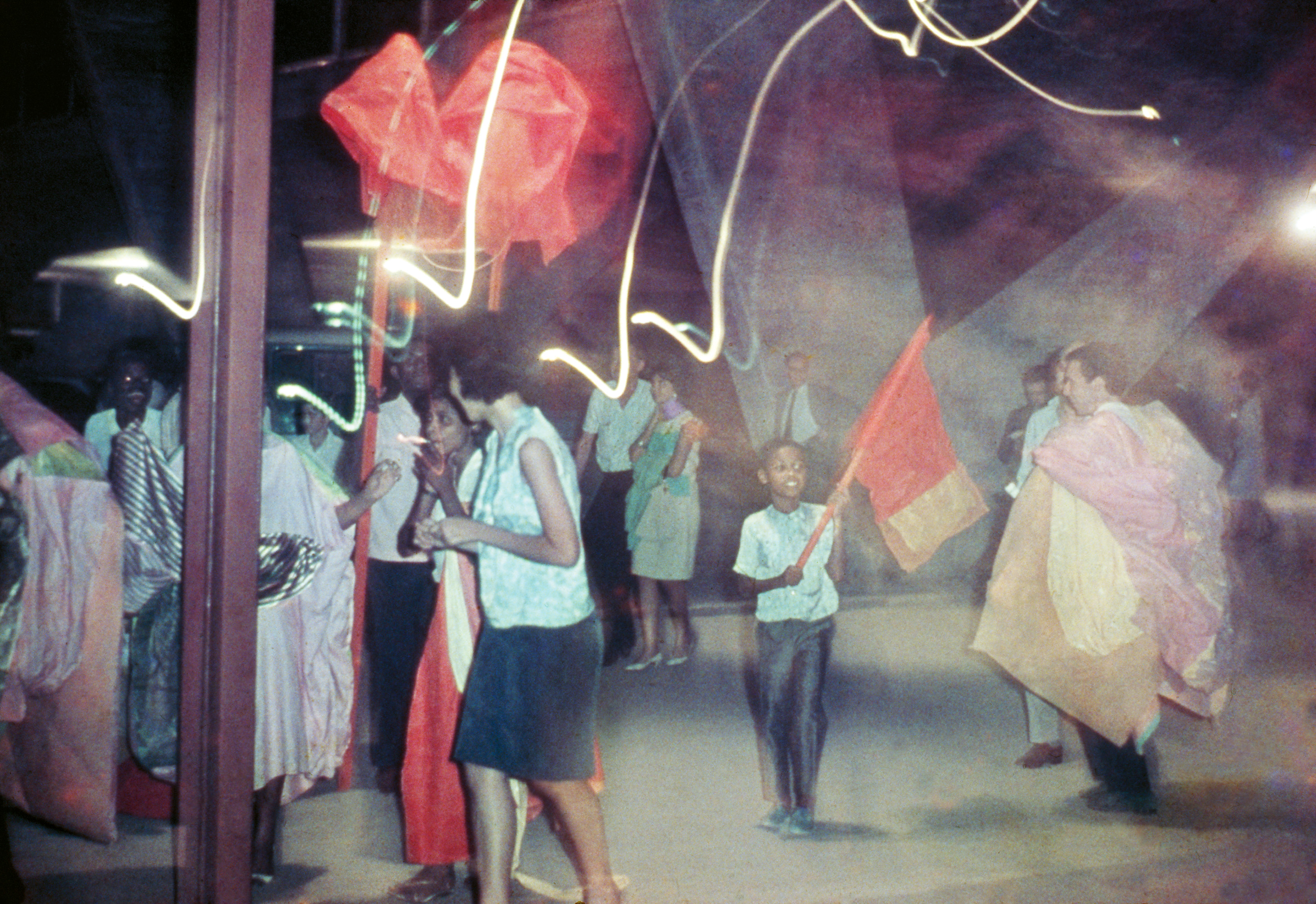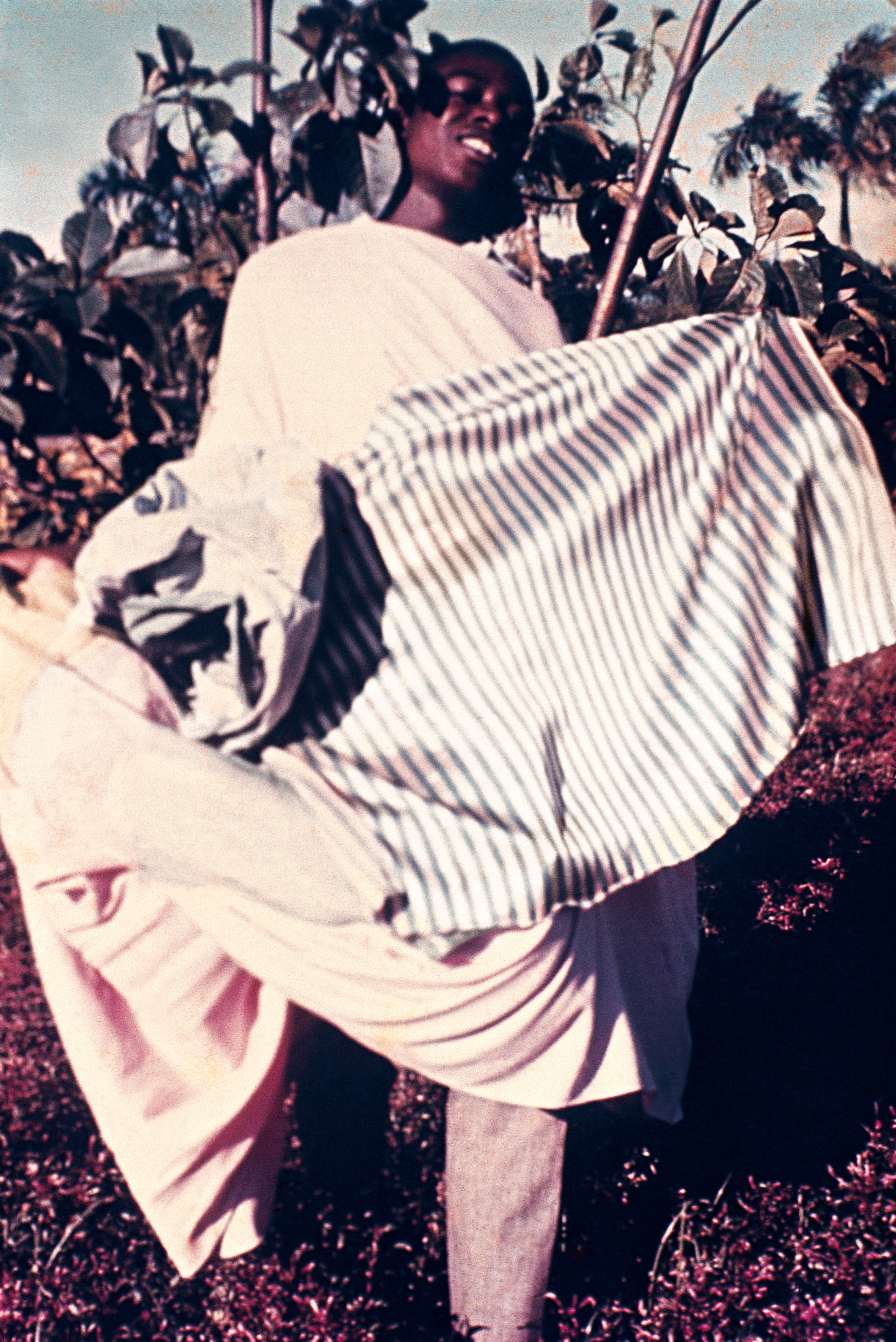Parangolés
Parangolés are capes, banners and flags made of fabrics and plastics, often with political or poetic phrases. When dressing, running around or dancing in a Parangolé, the person ceases to be a spectator and becomes part of the artwork. It is through samba, dancing and the streets that Oiticica definitively dissolves the barriers between visual arts, music and dancing, as well as altering the notions of “style” and “aesthetic coherence”, reaching the “discovery of the body”.
His first visit to Morro da Mangueira and Estação Primeira de Mangueira introduced him to the joys of samba, with its Dionysian rhythms in a community centered around creativity. “Parangolé emerged from the experience of dancing – a name Oiticica found on a sign in front of a makeshift shelter, built by a homeless person in the street, which read ‘This is Parangolé’ (Aqui é o Parangolé).” The colorful pieces highlight the importance of color and movement in the artist’s work. The artwork and the dancing participant become one. Thus, dissolving the boundaries between body and art, artist and audience and artwork and spectator. For Oiticica, it would lead the audience to a new ethical, participative, collective and transforming mindset.

Parangolés. Exposição “Opinião 65”, MAM Rio de Janeiro, 1965

Jerônimo com Parangolé P8 Capa 5 – “Mangueira”, 1965

Caetano Veloso com Parangolé P4 Capa 1, 1964

Nildo com Parangolé P15 Capa 11 – “Incorporo a revolta”, 1967

Nildo com Parangolé P4 Capa1, 1964
foto: Andreas Valentin

Frederico Morais com Parangolé 20 Capa 16 –“ Guevarcália”, Evento Apocalipopótese, Aterro do Flamengo, 1968
